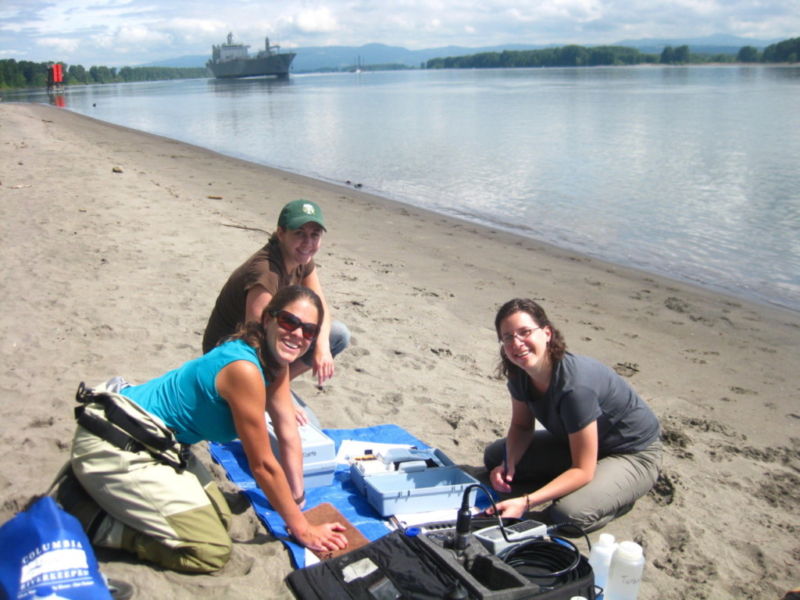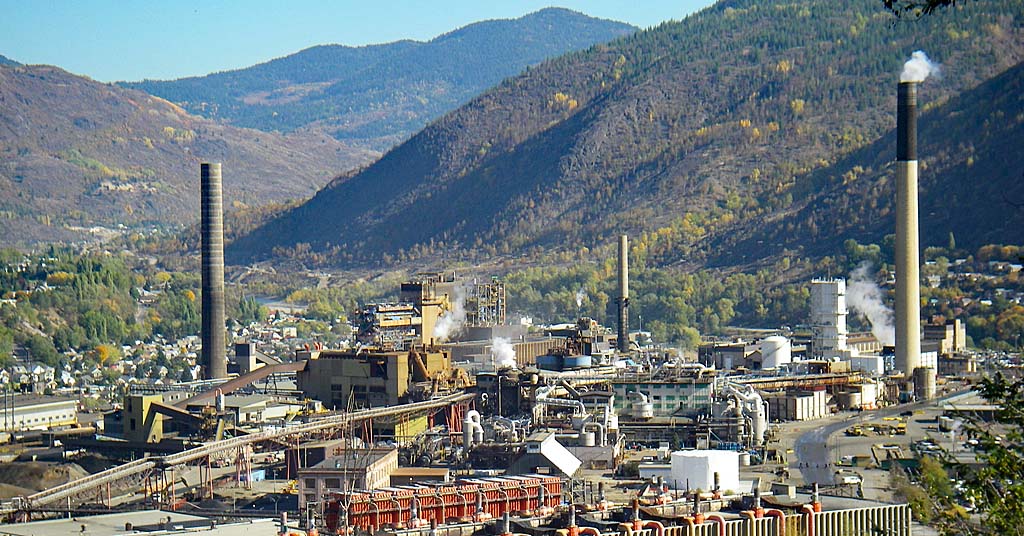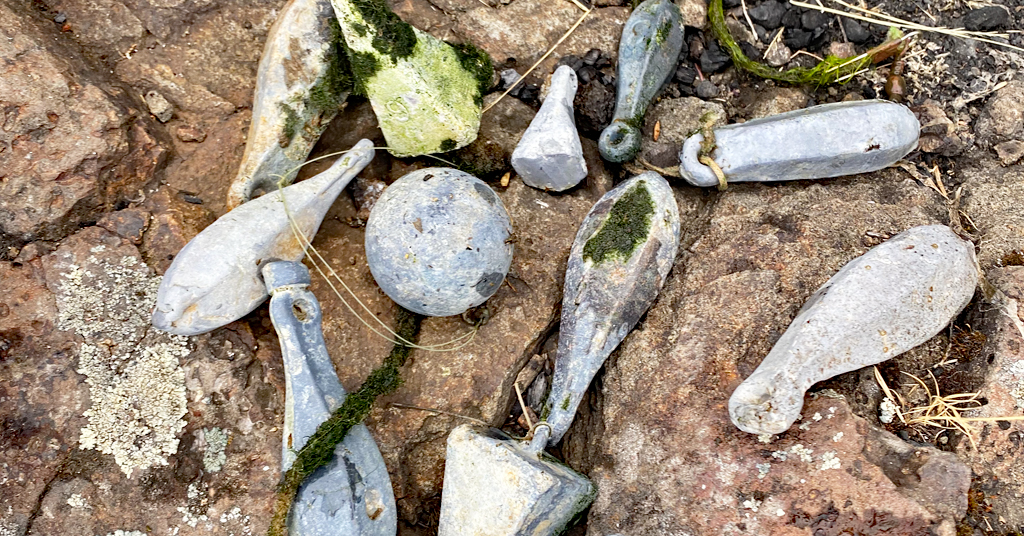
Lorri Epstein (bottom left) and volunteers collect water samples at a popular recreation beach on the Columbia River. Photo courtesy of Columbia Riverkeeper
By Dac Collins. March 26, 2020. Earlier this month, Columbia Riverkeeper submitted new water quality data to the Oregon Department of Environmental Quality (DEQ). The watchdog group does this every year as part of the DEQ’s Volunteer Water Quality Monitoring Program, and the data comes from 18 sites along the Columbia River — a number of which are popular recreation beaches and public parks.
Lorri Epstein runs Riverkeeper’s monitoring program, which relies on volunteers to go out and collect samples on a regular basis. She says the program is currently focused on testing for e. coli in these locations.
While there are a number of other pollutants affecting the Columbia — including DDT, arsenic, flame retardants and PCBs — Epstein says that e. coli is important because of its immediate human health effects.
“E. coli is also an indicator bacteria,” she says, “so if you’re finding e. coli in the water, that indicates that there are also very likely a whole host of other pathogens in that water.”
And as Epstein explains, these volunteer-driven programs fill an important gap in the state’s regulatory process.
“Our lab equipment is on loan from DEQ, and they support us with supplies, which is amazing. And they have recognized that volunteer monitoring programs, like ours, collect a lot more data and get a lot more information than they would be able to on their own,” Epstein says.
“It’s interesting because a lot of people look at a place like Waterfront Park in Hood River, where there’s an obvious swimming beach that’s been roped off, and they assume that someone — the city, the county, the port, whoever — must be monitoring this to make sure it’s safe for kids to swim. But that’s not actually happening,” she continues.
“That’s where Riverkeeper comes in to do monitoring and fill in that gap.”
According to DEQ spokesperson Laura Gleim, the data that was submitted by Riverkeeper earlier this month is now available through a publicly accessible database known as the Ambient Water Quality Monitoring System (AWQMS).
“AWQMS contains all of the water quality data from DEQ and our partner organizations, including the U.S. EPA and volunteer monitoring organizations,” Gleim says.
“DEQ runs a quality control check on the data from volunteer monitoring organizations before uploading it into the database…and the data in this database goes back decades.”
She also says that in recent years, “over 70 different organizations have submitted data to the DEQ for Oregon’s water quality assessment.”
This data is critical in gaining a better understanding of the various pollutants affecting Oregon’s waterways, and it helps the DEQ determine which water bodies (or sections of river) fail to meet the state’s water quality standards for aquatic life, recreation, drinking, agriculture, industry and other uses. Waterways that exceed those standards are added to the state’s 303(d) list.
(Click here for an interactive map that shows these listed waterways and provides additional information about the various pollutants affecting them.)
Epstein adds that while the data collected by volunteers* at places like Waterfront Park is submitted regularly to the DEQ, it can also be used to inform the public directly through the Swim Guide app. This data is uploaded to the app in real-time, she says, so that users can determine which beaches are safe for swimming.
“That way, we’re getting this information into the hands of the public and the people who are actually recreating.”
*Riverkeeper is currently looking for volunteers to help with its water quality monitoring program. Click here to learn more about volunteer opportunities.










